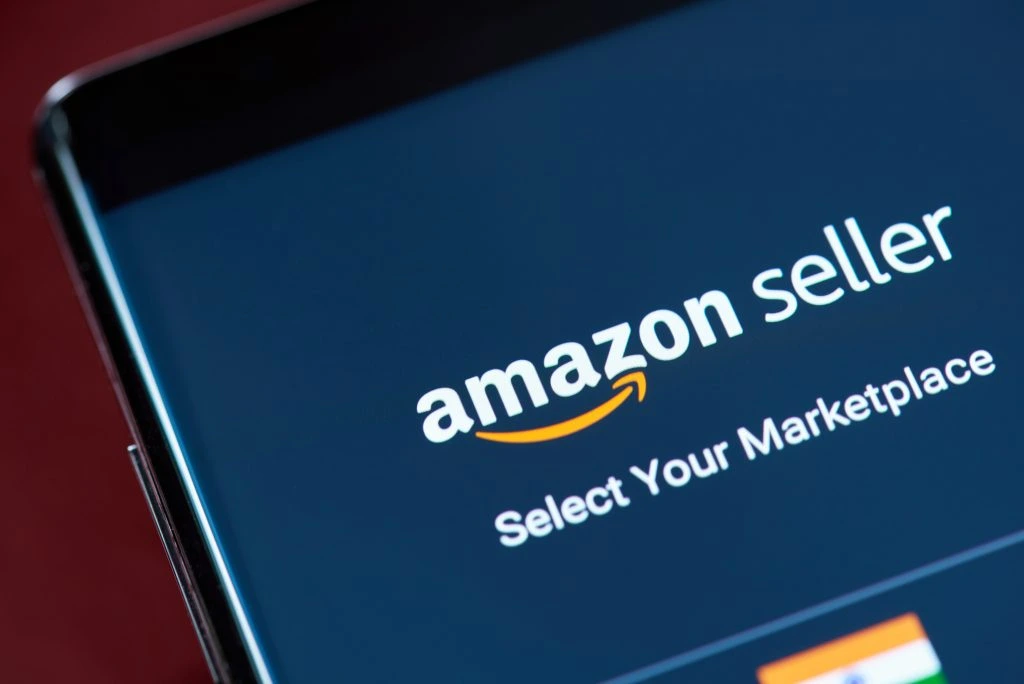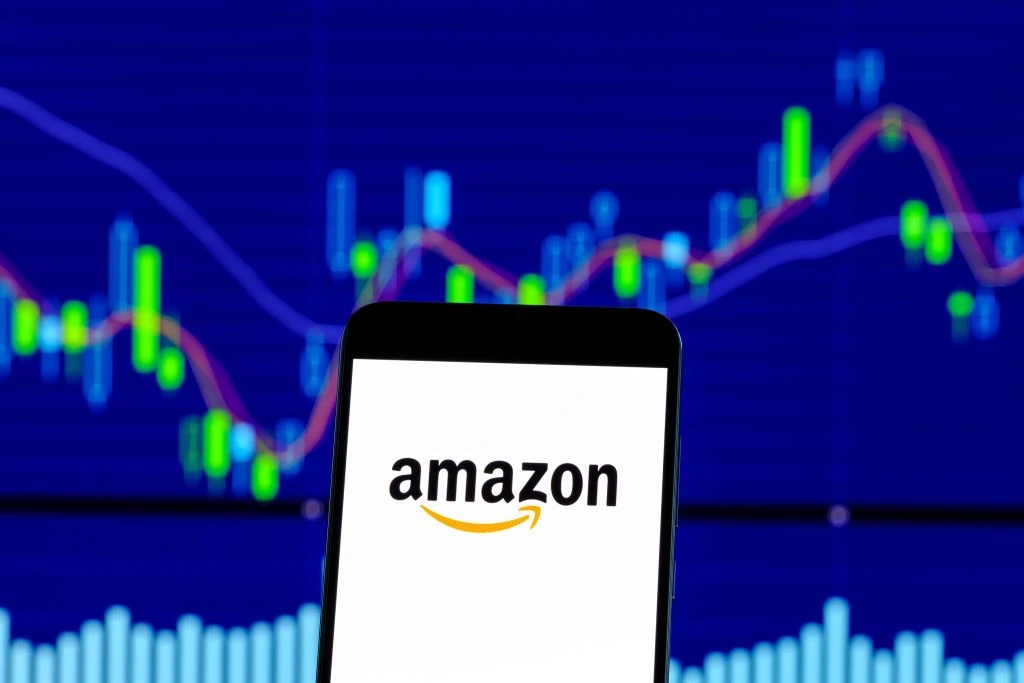
6 Steps To Getting Started Selling On Amazon

Table of Contents
- Step 1: Find a product type you want to sell
- Step 2: Look into your private label branding
- Step 3: Sign up for an Amazon Seller Central Account
- Step 4: Setup a dummy listing to see if Amazon requires any additional info prior to you placing your inventory order
- Step 5: Settle on a supplier
- Step 6: Create a social presence to generate interest in the product
Congratulations on your decision to become an Amazon seller! Selling private label products on Amazon can be very exciting, but it can also be confusing. AND it’s not uncommon for new sellers to feel incredibly lost when they first start, especially with important decisions like choosing an initial product to begin selling with.
Plus, if you have never run a business before, let alone an e-commerce business, we totally understand how overwhelming jumping into private label sales can be. But don’t stress…we have your back!
Fortunately, we have access to tons of insights from many Amazon sellers, past and present, to deliver helpful advice on the best ways to effectively begin your Amazon journey.
According to recent statistics, virtually half of all retail purchases made online in the United States are done through Amazon.com. That means by choosing to sell on Amazon, you are tapping into one of the largest sources for online retail traffic in the world, giving your product a great opportunity to be seen and generates sales!

Outclass Your Competitors
Achieve More Results in Less Time
Maximize your results and drive success faster with Helium 10’s full suite of Amazon and Walmart solutions.
Sign Up for FreeStep 1: Find a product type you want to sell

Before you even get involved with Amazon, it’s best to know WHAT you plan to sell on the famed e-commerce platform. Beyond choosing a product that interests you, picking a product that is PROFITABLE is the name of the game on Amazon. So how do you go about boosting your profit margin by finding a profitable product to sell?
This is where proper and thorough Amazon product research is about to be your new best friend. Why? Because gone are the days where you can just put up any product on Amazon and expect sales. You must choose products to sell that people already WANT TO BUY, not just read about.
Customers search for products to buy on Amazon in the same way you search for things on Google by typing in words and phrases to get relevant result. And like Google, Amazon is a search engine; instead of producing results for information on websites, Amazon returns products that match search queries.
How Sales Work On Amazon:
- Amazon champions products that customers are SEARCHING FOR and ALREADY EXIST; if you are trying to sell a new product that no one has ever heard of before, nor currently has a demand for, Amazon is NOT the platform to sell this new product on.
- Success on Amazon revolves around having your products found via CUSTOMER SEARCHES using KEYWORDS that are relevant to your product and then generating sales because customers chose to purchase your product over similar products displayed in the search results.
Choosing a product to sell on Amazon can be a very personal choice for many new sellers. Some opt to go with products that they themselves are familiar with or like while others simply research what products are selling well and choose something that appears to be trending upward in sales.
Whatever path you choose, the product you settle on should meet the following criteria:
- A verifiable demand for the product niche as proven with keywords – Demand for products on Amazon is evident by their relationship to specific words or short phrases that customers type into the search box, a.k.a. keywords. Moreover, product demand is determined by how often customers search for the item using keywords that Amazon has deemed relevant. The more people search for a specific type of item, the higher the demand for it.
- A relatively low number of competitors – If this will be your first product launched on Amazon, you would do well to choose a product niche that is not oversaturated with many competing products on the market. Try to choose something with only a few competitors at maximum. Your chances of success with your new product will be much higher with less competition.
- A relatively high number of sales among the few competitors – You’ll want to ensure that there is a profit to be made in the niche as well. Even if you find a great niche that has high demand and low competition, the few products that you find should be generating revenue. If no one product is generating a significant number of sales, you may want to look into another niche, or something similar to find something that can be profitable.
Do not feel too intimidated just yet because of the competition you may face. Rest assured, you will encounter others selling similar products to the one you ultimately choose. However, studying your competition before throwing your hat into the ring can be very beneficial.
When you study your competition very carefully, you can discover very valuable information such as:
- Product listing best practices – Pay attention to how each competitor sets up their respective product listing to find similarities or trends for successfully engaging with customers and enticing them to make a purchase. Details to look at include the product images and video, bullet points, product description, and questions answered about the product.
- Optimal keywords to incorporate into your own listing – When you read each competitor listing, take note of the words that the seller uses often when describing his or her product. The prime locations for Amazon keywords are in the product title, bullet points, and product description.
- Problems customers have with your competitors’ products – If you read through many of the top customer reviews and compare each competitor’s star rating, you can quickly get a sense of which competitors you can study to discover improvements that can make your product more desirable. Take note of issues customers mention on each competitor listing to find common traits that you can fix in your design to attract more customers.
- Who many of your top competitors may be – While using data from Amazon tools will certainly pinpoint your top competitors, a quick and easy way to start building up your PPC competitor list is to look in the “Sponsored products related to this item,” “Customers who bought this item also bought,” and “Customers also shopped for” sections.
- Product targeting ad opportunities – Using the same sections mentioned above, you can begin making a list of possible competitor products to target with the new Amazon Product Targeting ad function that allows you to put advertising for your product on competitor listing pages.
- How competitors handle customer service – By reading over the Q&A section of a competitor listing, you can see what concerns or questions people have asked about products similar to the one you plan to sell and get a glimpse at how they go about providing customer service. Pay close attention to the sellers who give highly-rated answers to questions and how they structure their return policy.
Additionally, be sure to fully research your competition, target keywords and phrases, and sales trends to see if you can afford to enter into the product niche. A product niche may sound like a good opportunity, but you must take all of the above information into account, coupled with the actual monetary costs of selling the product such as manufacturing, shipping cost, any referral fee, Amazon seller fee, and storage fees.
Some Helium 10 tools that can greatly assist you with product research tasks include:
- Black Box
- Cerebro
- Xray
- ASIN Grabber
- Profitability Calculator
- Inventory Level
- Review Downloader
- Profits
Step 2: Look into your private label branding

Once you have chosen your product to sell on the Amazon marketplace, you should consider establishing a private label brand name to associate with your Seller Central account. This brand name will serve as your seller identity on Amazon, and will come to represent your Amazon business as a whole.
When you have chosen a name, you should look into trademarking your brand name to protect you from malicious sellers and help with any legal troubles in the branding realm.
Additionally, make sure your brand gets indexed by applying for Amazon’s Brand Registry.
Step 3: Sign up for an Amazon Seller Central Account

Amazon Seller Central is the online platform where every Amazon vendor manages his or her Amazon account, including the Amazon listing storefront, sales and revenue, inventory management, credit card information for payments on business fees, customer service inquiries, and more.
However, there are some considerations to make before you sign up:
- Determine what category you plan to sell your product under, as certain categories are restricted to sellers with Professional plans.
- How many products do you plan on selling with your listing? If you plan to make your Amazon business your full-time job in time, you may want to consider upgrading to a Professional Seller Central account.
- How are you going to declare yourself? You have a few choices:
- Individual
- Sole Proprietor
- LLC
- C/S Corporation
For everyone starting out with their first product on Amazon, we suggest you start off with an Individual plan that only charges you $.99 per product sold on your Amazon listing plus other applicable taxes and fees.
For those looking to make their Amazon business a steady stream of reliable passive income, you may want to think about eventually signing up for the Professional plan once you begin selling more than 40 inventory items per month. Instead of being charged per item, you will be charged a monthly subscription fee of $39.99.
If and when you decide to upgrade, wait until you are ready to send in your inventory to Amazon FBA to avoid being needlessly charged. Two notable exceptions to this rule would be that a) the category you want to sell in is restricted and only available for the Professional level plan OR b) you want to get unique label barcodes to get them printed onto your product packaging.
To sign up for the Amazon USA marketplace, you will also need the following:
- Valid credit card
- Bank account
- Phone number
- Tax information
Depending on your situation, you may also need to present one or more of the following:
- Scanned copies of your passport
- National ID
- Bank account statement
- Credit card statement
Additionally, you will also need to participate in a step-by-step online interview to determine whether you will need to complete a W-9 form (as a U.S. taxpayer) or a W-8BEN (as a non-U.S. taxpayer).
At this time, you may also want to decide how you will fulfill each order you receive. Order fulfillment has to do with storage and logistics, and you must choose whether to do all of this yourself as the merchant or entrust the Fulfilled by Amazon (FBA) program from Amazon to handle your items.
Step 4: Setup a dummy listing to see if Amazon requires any additional info prior to you placing your inventory order

The purpose of setting up a dummy listing is to accomplish two things:
- You will learn how to use and manage your Amazon Seller Central account
- You will receive the Fulfillment Network Stock Keeping Unit (FNSKU) for your product; this is how Amazon identifies the item as unique to a particular seller)
You need the FNSKU for shipping and potentially your packaging, unless you use UPC codes. Creating this place holder listing now will trigger any Hazmat review that your products may incur. It will also confirm if your category or product has any gated restrictions (the product you are trying to sell is proprietary and is protected by a patent or trademark, meaning you do not have permission to sell the product.)
To create a dummy listing, follow these steps:
- Go to your Seller Central account and Click Catalog, then Add Products
- Add your product name to the search box and click Search
- Click Create a new product listing. (Do not click on Suggested Similar Products)
- Type in the name of your product into the search box to find your correct category, then click Find Category.
- Cycle through the available categories until you find the most relevant one
- Fill in Vital Info required fields
- Fill out Offer required fields
- Fill in Description required fields
- Save and finish
Step 5: Settle on a supplier

Now that all your product ideas and product research is complete and your Amazon Seller Central account is all squared away, you are now ready to find a supplier to build your product inventory for your business.
Sometimes you can dig deep into your competitors to find out what suppliers they use to give you an idea of what to look for. However, this may turn out to be fruitless because a) your competitor has an exclusive deal with that supplier and you cannot legally use them to produce a similar product, or b) you cannot find out who the supplier is anyway.
Your best bet is to enlist the help of a supplier agent, a professional headhunter of sorts that can help you to find a suitable supplier for your type of product utilizing their wide network.
Most suppliers you are likely to find will be in China, so be prepared for a lot of international conversations. However, you may be able to find suppliers outside of China depending on the item you are looking to create. Many top brands will often opt to manufacture their products in the USA or Europe to catch the attention of customers or for perception of quality.
When you have narrowed down your list of possible suppliers to about five or six, have them all send you workable samples of your proposed product to you for review and thorough examination. While looking over these samples, be sure to scrutinize every detail because if there is a flaw, your Amazon sales and reviews will let you know the hard way.
Choose the supplier who provided you with the best quality build at the best price point. And be sure to order your first and second batches at the same time, so that you can avoid running out of inventory as you launch your product on Amazon. (Hint: running out of inventory, especially for extended periods of time, can hurt your Amazon ranking and nobody wants that!)
Step 6: Create a social presence to generate interest in the product

This final step may seem simple, but it may demand the most time and effort.
Create social media pages to attract people who may be interested in your product. Such platforms include Facebook, Instagram, Etsy, Pinterest, LinkedIn, and maybe even your own website. Choose the platforms that will be the most conducive for your product type and the target audience you are trying to attract.
Allow people to converse with you and others about subject matters that are relevant to your product, such as activities or things that involve your product type. For example, if you are trying to sell a cat toy product, you may want to create social media pages that revolve around cat toys, or cats in general.
Launch Your Amazon Success for Free
Sign up for a free Helium 10 account and get instant access to tools that will help you:<br /> <br /> – Find profitable products<br /> – Optimize your product listings<br /> – Build a strong brand presence
PLEASE NOTE: You may not want to state that this page is dedicated to selling your product because people may think you are being disingenuous. Create your social media pages like fan pages of subject matter that are directly related to your product, but don’t mention it quite yet.
It’s through these channels that you can begin to develop a relationship with your target audience and build trust with them. Additionally, you can gain insight into how they think and what they want in an item like yours for further product refining.
Once you have been conversing and participating on these channels, you can mention to the group that you are planning on releasing a product that may cater to their needs, and ask if they would be willing to give your product a try. You are more likely to get a positive response from people who have come to trust you and can act as your initial reviews in the future when you finally launch your product.
You can also use this tactic in other established social circles, adding valuable input in relevant chat threads, comments, and such to establish yourself in the community before revealing your product.
Stay tuned for a follow-up blog where we will cover more steps on how to launch your product and build out your product listing!
Achieve More Results in Less Time
Accelerate the Growth of Your Business, Brand or Agency
Maximize your results and drive success faster with Helium 10’s full suite of Amazon and Walmart solutions.

